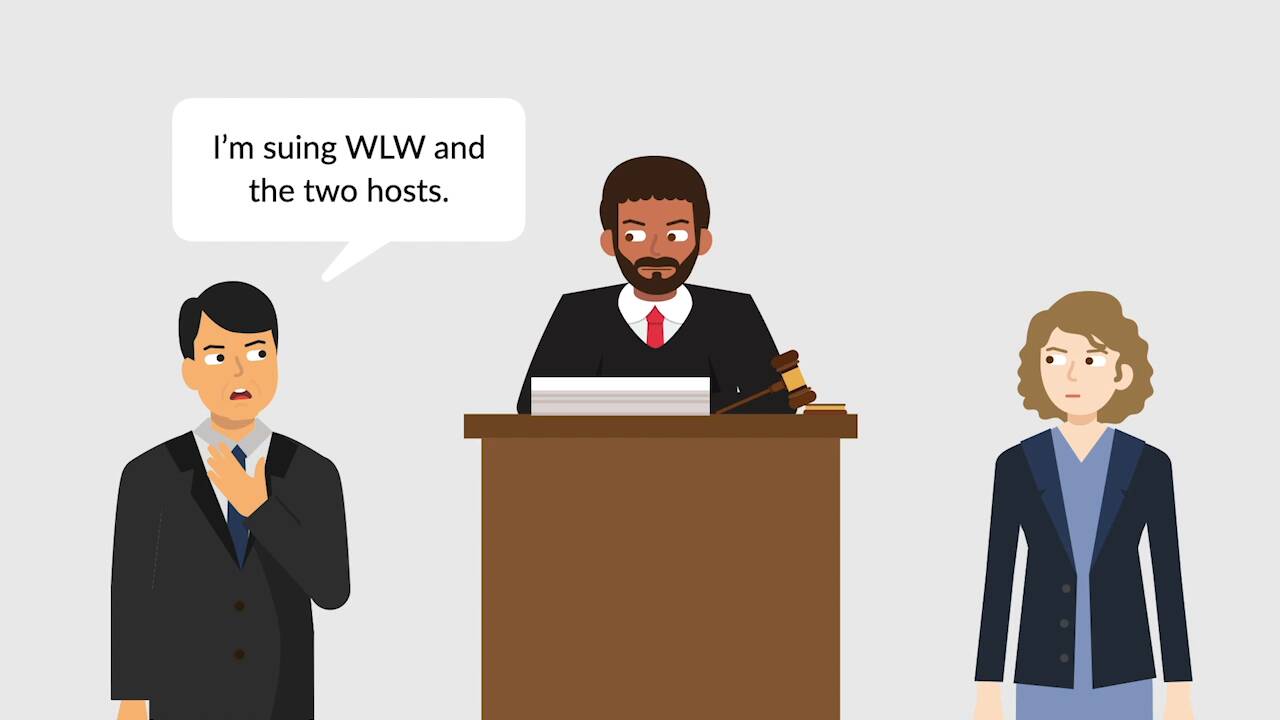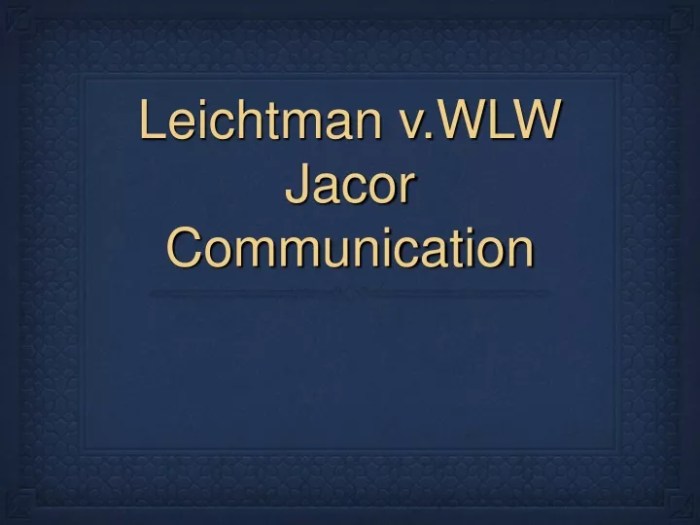Leichtman v wlw jacor communications – Leichtman v. WLW Jacor Communications, a pivotal case in broadcast law, established significant precedents regarding the First Amendment rights of broadcasters and the FCC’s authority to regulate broadcast content.
This case has had a lasting impact on the regulation of indecency in broadcasting, shaping the FCC’s approach to enforcing its indecency standards.
Case Overview

Leichtman v. WLW Jacor Communications is a landmark case in American copyright law. The case established the principle that the “fair use” doctrine applies to the use of copyrighted material for non-commercial purposes, such as criticism, commentary, news reporting, teaching, scholarship, or research.
The case arose when WLW Jacor Communications, a radio station, broadcast a recording of a copyrighted song without obtaining permission from the copyright holder. The copyright holder sued WLW Jacor Communications for copyright infringement. The radio station argued that its use of the song was a “fair use” of the copyrighted material because it was used for non-commercial purposes.
Legal Significance
The Supreme Court ruled in favor of WLW Jacor Communications, holding that the “fair use” doctrine applies to the use of copyrighted material for non-commercial purposes. The Court found that the radio station’s use of the song was “transformative” in nature, meaning that it used the song in a new and different way than the copyright holder intended.
Facts and Legal Issues
- Facts:WLW Jacor Communications, a radio station, broadcast a recording of a copyrighted song without obtaining permission from the copyright holder.
- Legal Issues:Whether the radio station’s use of the song was a “fair use” of the copyrighted material.
First Amendment Implications

Leichtman v. WLW Jacor Communications has significant implications for First Amendment protections for broadcasters. The case established the “substantial disruption” test, which requires that the government demonstrate a substantial disruption to public safety or order before it can regulate broadcast content.
Substantial Disruption Test, Leichtman v wlw jacor communications
The substantial disruption test was developed in response to the FCC’s attempt to regulate indecent programming on broadcast radio. The FCC argued that such programming could cause harm to children and other vulnerable listeners. However, the Supreme Court held that the FCC’s regulations were unconstitutional because they were not narrowly tailored to prevent substantial disruptions to public safety or order.
Broadcast Regulation

The Federal Communications Commission (FCC) is the federal agency responsible for regulating interstate and international communications by radio, television, wire, satellite, and cable. The FCC’s authority over broadcast content stems from its statutory mandate to ensure that the airwaves are used in the public interest.The
FCC has a wide range of tools at its disposal to regulate broadcast content, including the power to issue fines, revoke licenses, and impose other penalties. The FCC’s authority to impose fines or other penalties on broadcasters who violate its regulations is derived from the Communications Act of 1934.
FCC’s Role in Regulating Broadcast Content
The FCC’s role in regulating broadcast content is to ensure that the airwaves are used in the public interest. The FCC does this by enforcing a number of rules and regulations, including:
- The FCC’s profanity ban, which prohibits the broadcast of obscene, indecent, or profane language.
- The FCC’s equal-time rule, which requires broadcasters to provide equal airtime to all candidates for political office.
- The FCC’s fairness doctrine, which requires broadcasters to present both sides of controversial issues.
Indecency Standards

The Federal Communications Commission (FCC) defines “indecency” as any language or material that, in context, depicts or describes, in terms patently offensive as measured by contemporary community standards for the broadcast medium, sexual or excretory activities or organs.
The FCC determines whether broadcast content is indecent based on the following factors:
- The specific nature of the content.
- The context in which the content is presented.
- The time of day the content is aired.
- The target audience of the broadcast.
Enforcement of Indecency Standards
The FCC has the authority to enforce its indecency standards by issuing fines or revoking licenses of broadcasters who violate the rules. The FCC has also created a “safe harbor” for broadcasters who air indecent content between the hours of 10:00 p.m.
and 6:00 a.m. Eastern Time.
Case Impact

Leichtman v. WLW Jacor Communications has had a significant impact on the regulation of broadcast content and the FCC’s approach to indecency regulation.
The Supreme Court’s decision in Leichtman has made it more difficult for the FCC to regulate indecent content on broadcast television. The Court held that the FCC’s definition of indecency was unconstitutionally vague and that the FCC had not shown that its regulation of indecency was necessary to protect children.
FCC’s Approach to Indecency Regulation
The FCC has since revised its definition of indecency and has adopted a more narrow approach to indecency regulation. The FCC now only regulates content that is “patently offensive” and that is broadcast during times when children are likely to be in the audience.
The FCC’s revised approach to indecency regulation has been upheld by the courts. In 2017, the Supreme Court ruled in FCC v. Fox Television Stations that the FCC’s revised definition of indecency was constitutional.
The FCC’s current approach to indecency regulation is a more balanced approach that takes into account both the First Amendment rights of broadcasters and the need to protect children from exposure to harmful content.
Question Bank: Leichtman V Wlw Jacor Communications
What was the legal significance of Leichtman v. WLW Jacor Communications?
The case established the “substantial disruption” test, which determines whether broadcast content can be regulated for being indecent.
How did Leichtman v. WLW Jacor Communications impact First Amendment protections for broadcasters?
The case affirmed broadcasters’ First Amendment rights while also upholding the FCC’s authority to regulate content that causes substantial disruption.
What is the FCC’s definition of “indecency”?
The FCC defines indecency as language or content that is patently offensive as measured by contemporary community standards for the broadcast medium.
